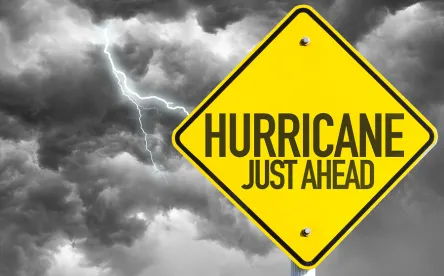The disaster wrought by Hurricanes Harvey, Irma, and Maria has also occasioned a flood of federal relief dollars into the areas impacted. Projects seeking federal funding must meet a variety of legal requirements, each of which warrant separate analysis. Here, we discuss a single federal construction contract requirement and how it has changed in light of these natural disasters: the requirement that federal contracts have written affirmative action programs.
Over the course of the last month, the U.S. Department of Labor, and specifically the Office of Federal Contract Compliance Programs (OFCCP), has worked to support relief efforts from the devastation of Hurricanes Harvey, Irma, and Maria by temporarily relaxing federal contractors’ requirements to have written affirmative action programs. The OFCCP’s National Interest Exemptions—or NIEs—protect contractors for a limited time and in limited areas: for a period of three months (subject to possible extension) following these weather events, new Federal contracts to provide hurricane relief efforts will be exempt from the written affirmative action programs contained in Executive Order 11246, the Vietnam Era Veterans Readjustment Assistance Act (VEVRAA), and Section 503 of the Rehabilitation Act of 1973. But these exemptions are limited in breadth, as well as temporally and geographically.
What contracts are covered?
The NIEs apply to new supply & service and construction contracts which are entered into within the three-month period (discussed below) and which are solely for the specific purposes of providing hurricane relief. Let’s break that down. According to OFCCP, the contract must be:
-
New. That means that if it is a contract entered into before the NIE applied, even if for hurricane relief, it is not covered by the NIE.
-
For the specific purpose of providing hurricane relief. The OFCCP takes a Justice Stewart “I know it when I see it” approach to defining this requirement. While the OFCCP says it has notified all federal contracting agencies of the NIE and provided them with “language to include in new supply & service and construction contracts,” it goes on to state that “Federal contracting officers know the terms and conditions of the contracts they execute. Therefore, they are in the best position to determine what constitutes a supply & service or construction contract specifically to provide Hurricane Harvey relief and whether it is appropriate to include the NIE language in the contract.”
-
Solely for the specific purpose of providing hurricane relief. So if the contract is for hurricane relief and something else, it is not covered by the NIE.
Further, the NIEs also apply to subcontractors as long as the subcontractor is providing goods or services as part of a prime contract specifically for hurricane relief.
For what time period does the NIE apply?
-
For Hurricane Harvey: applies to new supply & service and construction contracts entered into between September 1, 2017, and December 1, 2017 (with possible extension).
-
For Hurricane Irma: applies to new supply & service and construction contracts entered into between September 8, 2017, and December 8, 2017 (with possible extension).
-
For Hurricane Maria: applies new supply & service and construction contracts entered into between September 21, 2017, and December 21, 2017 (with possible extension).
What geographic areas are covered?
For all three hurricanes, this is defined as any area that has been designated a Designated Area by FEMA to receive both individual and public assistance (FEMA categories A and B). For Harvey, the OFCCP lists some specific counties in Texas: Aransas, Bee, Brazoria, Calhoun, Chambers, Colorado, Fayette, Fort Bend, Galveston, Goliad, Hardin, Harris, Jackson, Jasper, Jefferson, Kleberg, Liberty, Matagorda, Montgomery, Newton, Nueces, Orange, Refugio, Sabine, San Jacinto, San Patricio, Victoria, Waller, Wharton. The ultimate list is available on FEMA’s website: www.fema.gov/disasters.
What the NIE does not exempt?
New supply & service and construction contracts falling under NIE continue to be subject to the nondiscrimination requirements of EO 11246, VEVRAA, and Section 503, and must still meet the following FAR requirements:
-
Posting of the “Equal Opportunity is the Law” notice under all three laws;
-
Record keeping and record retention requirements under all three laws; and
-
Employment listing with the appropriate employment service delivery system as required under VEVRAA.




 />i
/>i

